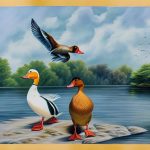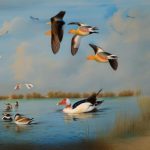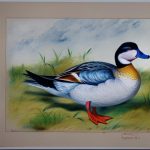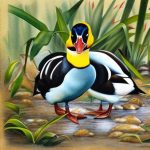Brown ducks are a popular choice for many duck enthusiasts due to their beautiful plumage and friendly disposition. These ducks come in a variety of shades of brown, ranging from light tan to deep chocolate, and are known for their hardiness and adaptability. Brown ducks are often raised for their eggs, meat, and pest control abilities, making them a valuable addition to any farm or homestead. In this article, we will explore the characteristics and physical traits of brown ducks, popular brown duck breeds, their history and origins, as well as the care, maintenance, breeding, and rearing of these delightful birds. Additionally, we will discuss the role of brown ducks in agriculture and conservation efforts.
Key Takeaways
- Brown duck breeds are popular for their unique characteristics and physical traits.
- There are several popular brown duck breeds, each with its own history and origins.
- Care and maintenance of brown ducks are essential for their health and well-being.
- Breeding and rearing brown ducks require specific knowledge and techniques.
- Brown ducks play an important role in agriculture and conservation efforts.
Characteristics and Physical Traits of Brown Ducks
Brown ducks are medium-sized birds with sturdy bodies and a distinctive upright stance. They have broad, rounded heads with bright, alert eyes and a slightly curved bill. Their plumage is typically a mix of shades of brown, often with subtle patterns or markings that add to their overall attractiveness. Brown ducks have strong, webbed feet that make them excellent swimmers and foragers, and they are known for their ability to thrive in a variety of environments. These ducks are also prized for their calm and friendly demeanor, making them a popular choice for backyard flocks and small farms. In addition to their charming appearance, brown ducks are also valued for their high egg production and delicious meat, making them a versatile and valuable addition to any flock.
Popular Brown Duck Breeds
There are several popular brown duck breeds that are favored by duck enthusiasts for their unique characteristics and attributes. The Khaki Campbell is a well-known brown duck breed that is prized for its exceptional egg-laying abilities, often producing upwards of 300 eggs per year. The Cayuga duck is another popular brown breed, known for its stunning iridescent greenish-black plumage that shimmers in the sunlight. The Saxony duck is a German breed that is prized for its large size, excellent meat quality, and calm temperament. Other popular brown duck breeds include the Buff Orpington, Welsh Harlequin, and Silver Appleyard, each with its own distinct qualities and traits that make them valuable additions to any flock.
History and Origins of Brown Duck Breeds
The history of brown duck breeds can be traced back to various parts of the world, with different breeds originating in different regions. The Khaki Campbell, for example, was developed in England by Mrs. Adele Campbell in the late 19th century by crossing Rouen, Runner, and Indian Runner ducks. The Cayuga duck hails from the United States, specifically from the shores of Lake Cayuga in New York, where it was developed by local farmers in the mid-19th century. The Saxony duck was developed in Germany in the 1930s by crossing Pekin, Rouen, and Blue Pomeranian ducks. These breeds were all developed with specific goals in mind, whether it was for egg production, meat quality, or simply as ornamental birds. Today, these brown duck breeds continue to be cherished for their unique qualities and contributions to agriculture and conservation efforts.
Care and Maintenance of Brown Ducks
Brown ducks are relatively easy to care for and maintain, making them an ideal choice for both experienced and novice duck keepers. Providing a suitable living environment is essential for the health and well-being of brown ducks. This includes access to clean water for swimming and drinking, as well as a secure shelter to protect them from predators and the elements. Brown ducks also require a balanced diet that includes a mix of commercial poultry feed, fresh greens, and occasional treats such as mealworms or cracked corn. Regular health checks and access to veterinary care are important for ensuring the long-term health of brown ducks. Additionally, providing ample space for these active birds to roam and forage is essential for their physical and mental well-being.
Breeding and Rearing Brown Ducks
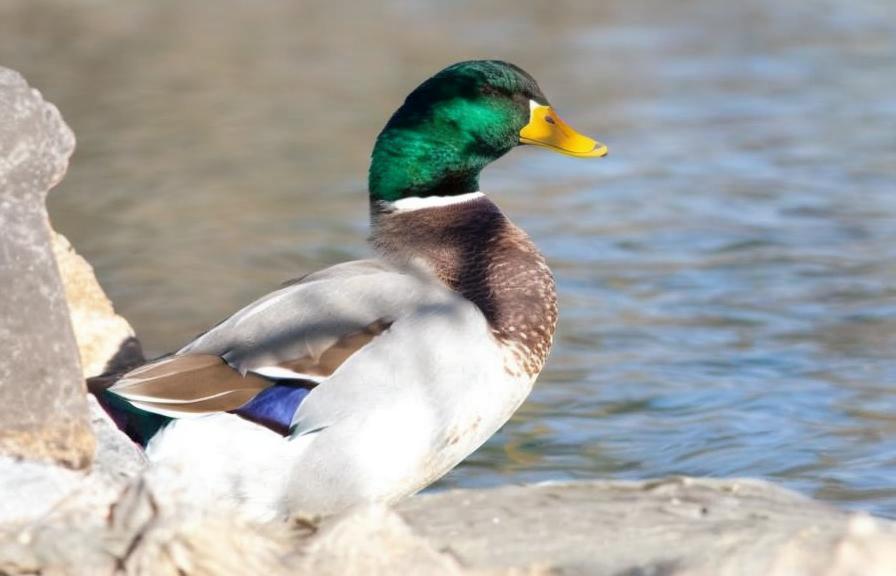
Breeding brown ducks can be a rewarding experience for duck enthusiasts looking to expand their flock or preserve rare breeds. When breeding brown ducks, it’s important to select healthy, well-matched breeding pairs to ensure strong offspring with desirable traits. Ducklings should be hatched in a warm, secure environment and provided with access to clean water, nutritious feed, and plenty of space to grow and develop. Proper socialization and handling from an early age can help young ducks become friendly and well-adjusted adults. As they mature, brown ducks may begin laying eggs at around 5-6 months of age, depending on the breed. Providing suitable nesting boxes and a quiet, comfortable environment can encourage successful egg production and hatching.
Brown Ducks in Agriculture and Conservation
Brown ducks play an important role in agriculture and conservation efforts around the world. Their ability to forage for insects and other pests makes them valuable allies in organic farming practices, where they can help control unwanted pests without the use of harmful chemicals. Additionally, brown ducks are prized for their high egg production and delicious meat, making them a valuable resource for small-scale farmers and homesteaders. In conservation efforts, brown ducks are often raised to preserve rare or endangered breeds, helping to maintain genetic diversity within duck populations. By raising and breeding brown ducks, enthusiasts can contribute to the preservation of these unique breeds while also enjoying the many benefits they provide in terms of food production and pest control.
In conclusion, brown ducks are a versatile and valuable addition to any farm or homestead. With their charming appearance, friendly demeanor, and valuable contributions to agriculture and conservation efforts, these delightful birds have much to offer both experienced and novice duck enthusiasts. By understanding their characteristics, history, care requirements, breeding methods, and roles in agriculture and conservation, individuals can appreciate the unique qualities of brown ducks while also contributing to their preservation and well-being. Whether raised for eggs, meat, pest control, or simply as beloved companions, brown ducks continue to capture the hearts of duck enthusiasts around the world.
Sure, here’s the paragraph with the related article included as an tag:
If you’re interested in learning more about all brown duck breeds, be sure to check out Poultry Wizard’s comprehensive guide on the topic. This article provides valuable insights into the different brown duck breeds, their characteristics, and how to care for them. Whether you’re a beginner or an experienced duck owner, this resource is a must-read for anyone looking to expand their knowledge of brown duck breeds. For more information on poultry care and breeding, visit Poultry Wizard.
FAQs
What are all brown duck breeds?
All brown duck breeds are a group of duck breeds that have brown plumage. Some common brown duck breeds include the Cayuga, Saxony, and Silver Appleyard.
What is the average size of all brown duck breeds?
The average size of all brown duck breeds varies, but most are medium to large in size. They typically weigh between 6 to 8 pounds.
What are the typical characteristics of all brown duck breeds?
All brown duck breeds have similar characteristics such as a brown plumage, a sturdy build, and a calm and friendly temperament. They are also known for their excellent foraging abilities.
What is the egg-laying capacity of all brown duck breeds?
All brown duck breeds are good egg layers, with the ability to produce around 150 to 200 eggs per year. Their eggs are typically large and have a slightly tinted or brownish shell.
What are the uses of all brown duck breeds?
All brown duck breeds are versatile and can be used for various purposes. They are commonly raised for their meat, eggs, and as pets. Additionally, their brown plumage makes them popular for ornamental purposes.
Meet Walter, the feathered-friend fanatic of Florida! Nestled in the sunshine state, Walter struts through life with his feathered companions, clucking his way to happiness. With a coop that’s fancier than a five-star hotel, he’s the Don Juan of the chicken world. When he’s not teaching his hens to do the cha-cha, you’ll find him in a heated debate with his prized rooster, Sir Clucks-a-Lot. Walter’s poultry passion is no yolk; he’s the sunny-side-up guy you never knew you needed in your flock of friends!


